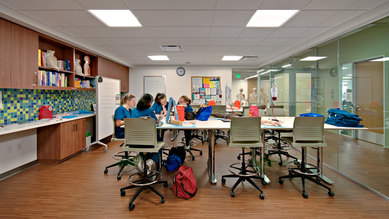Interprofessional Education: Beyond the Classroom
The necessity for providers from all health professions to work together in coordinated care teams has become a critical component of patient care. Faced with an aging population with multiple morbidities and a rapid rise in chronic conditions like diabetes, the healthcare system is challenged to provide full spectrum care as patients’ needs progress from managing acute conditions to onset of long-term diseases. The need for healthcare practitioners who can work effectively in this environment has driven the rapid adoption of an interprofessional education (IPE) model for the health professions.
As a design firm serving both the higher education and healthcare markets, SmithGroup is committed to understanding the trends that drive the space and design needs of our clients. Members of our health sciences education design team met with representatives from a cross-section of medical, nursing, physical therapy and dental programs to discuss how the move to interprofessional education is affecting the types of spaces required for health professions education.
There has been considerable discussion regarding how to design classrooms to foster collaborative learning. For this discussion, we decided to focus on areas outside of the classroom and explore the role that these spaces play in fostering interprofessional education. Our discussions evolved around three topic questions:
- What are the best informal settings to bring together students together?
- What is the most effective use of simulation for IPE?
- How can faculty work space support interprofessional collaboration?
It’s important to understand the answers to these questions and we look to implement and design appropriate settings for interprofessional education.
